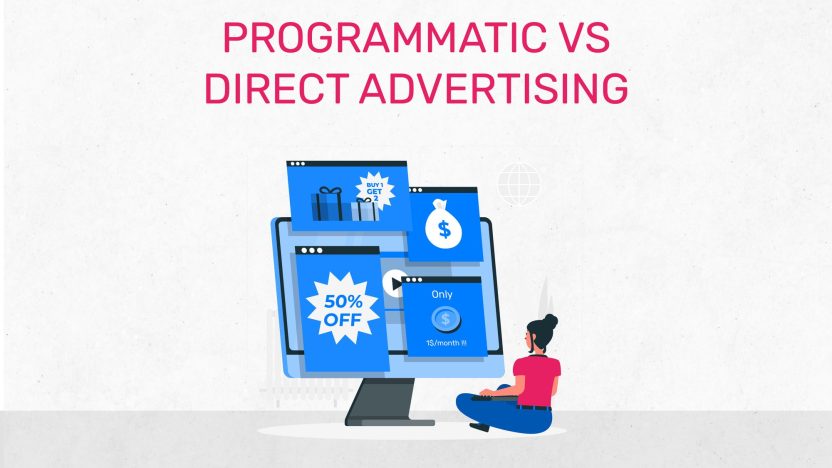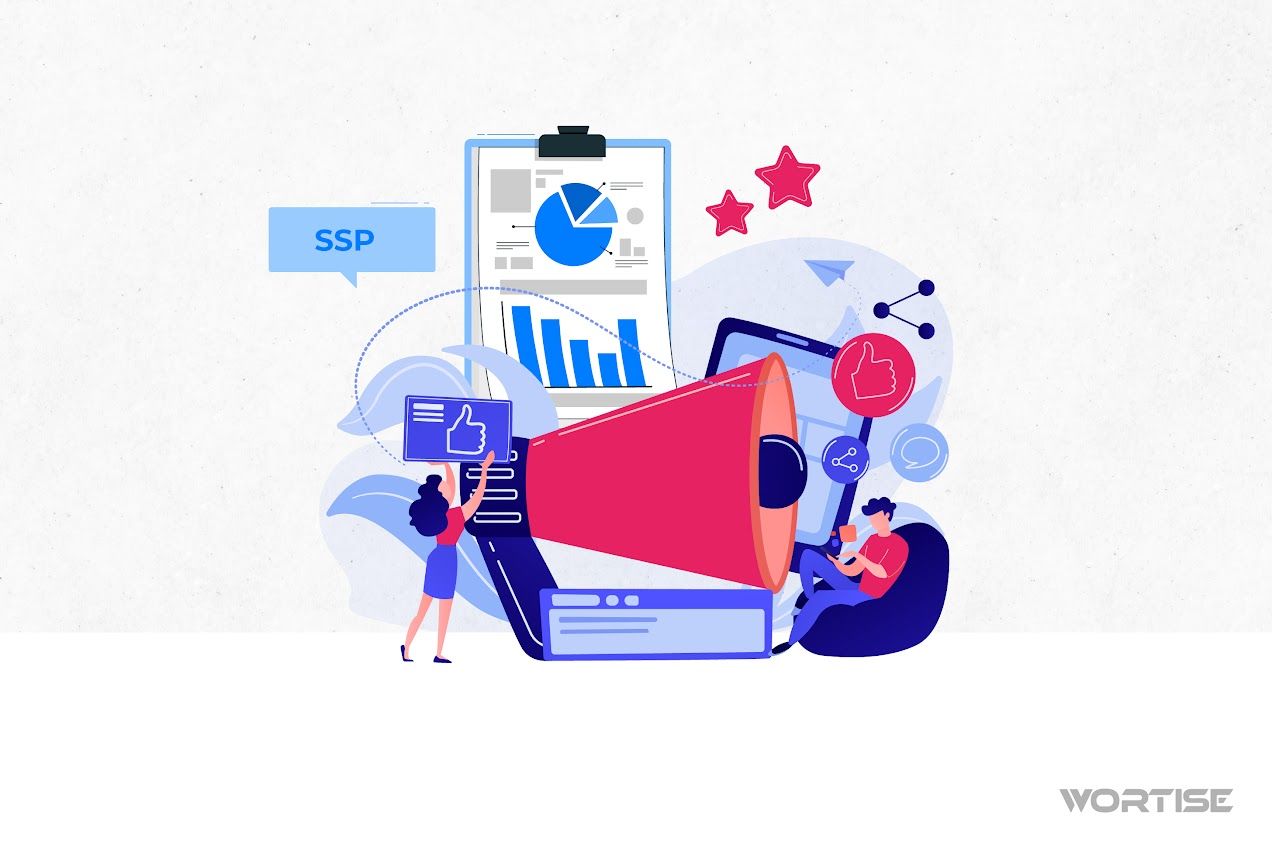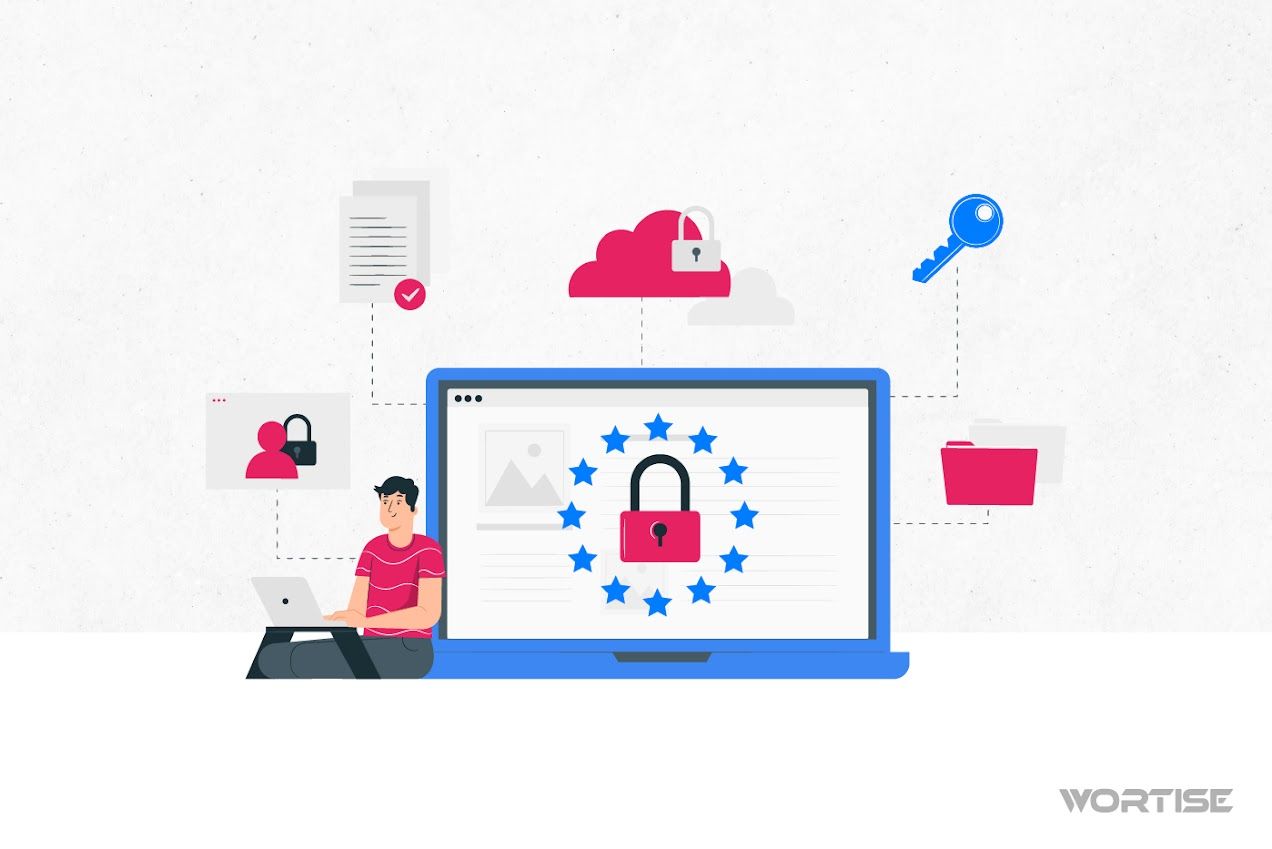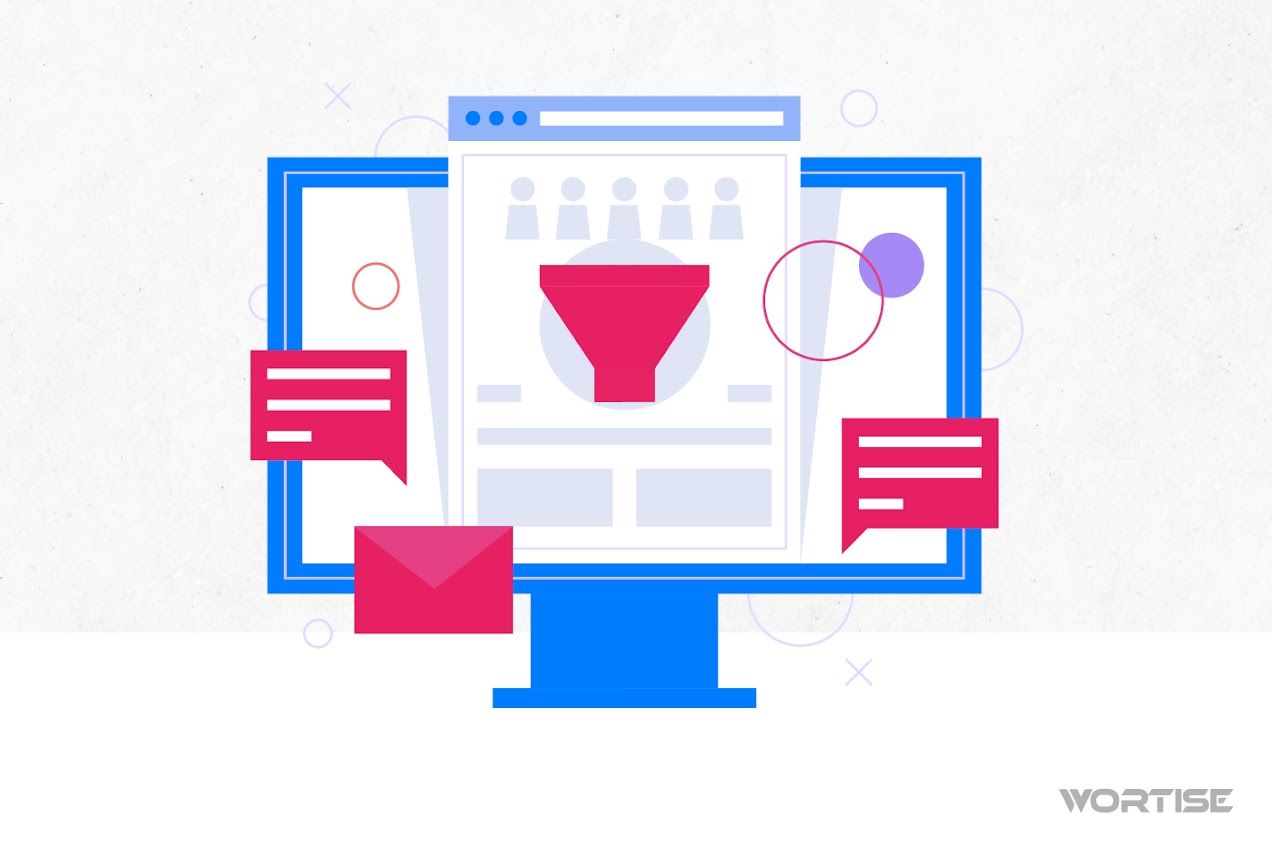Elegir entre varias opciones de media buying para monetizar tu app es una de las preocupaciones que mantienen en vela a muchos publishers. en especial si tienes un ad budget específico y no quieres desperdiciar ni un dólar. ¿Programmatic o Direct Advertising? ¿Cuál deberías elegir para maximizar tu ad revenue y evitar decepciones? La buena noticia es que ambas son super efectivas, y lo mejor es que no hay una que sea absolutamente superior a la otra. Todo depende de lo que necesites.
¡Vamos a resolver todas tus dudas sobre cuál utilizar en tu estrategia de monetización móvil! En este post conocerás cómo funcionan, así como sus beneficios y desventajas. Por supuesto, también te diremos cuál elegir si buscas un buen eCPM. ¿Listo para empezar?
¿Qué es el programmatic advertising?
Uno de los grandes dilemas actuales podría ser cuántos anuncios vemos a diario, no importa en qué dispositivo estamos (smartphone, tv, laptop), la aplicación en la que nos encontremos o en qué horario estemos consumiendo este servicio, siempre estaremos expuestos a los anuncios publicitarios de otros, incluso sin darnos cuenta.
En tal sentido, si te dijéramos que muchos de estos ads son programados específicamente para nosotros ¿nos creerías?
Ojalá la respuesta haya sido un sí, porque resulta que en gran medida de eso se trata la programmatic advertising.
Es una técnica que conecta a publishers con plataformas de anuncios publicitarios, es decir, ventanas en el entorno digital donde se mostrarán tus ads o los de cualquier otro para llegar a una audiencia específica.
La publicidad programática utiliza entonces la tecnología para automatizar la compra y venta de espacios publicitarios digitales.
Por aparecer en dichas ventanas de exhibición se crean pujas automáticas que determinarán el precio o el valor de dicha exposición, algo que sucede en tiempo real, utilizando datos para decidir qué anuncio es el más adecuado para mostrarle a un usuario en particular.
Puedes pensar en esto como en una subasta. Los anunciantes deben establecer parámetros para su público objetivo, definirlo, segmentarlo y además deben establecer cuánto están dispuestos a pagar por una impresión (cada vez que se muestra su anuncio).
Luego, automáticamente se analizan a los usuarios en tiempo real y realizan pujas en las subastas por las impresiones que coincidan con esos parámetros. Todo esto sucede en menos de un segundo.
¿Qué es el direct advertising?
El direct advertising o anuncios directos tienen un comportamiento claramente diferenciado con la técnica anterior.
Para comprenderlo, te invitamos a que te visualices navegando en la web, entrando en tu página de noticias o entretenimiento de tu preferencia. De pronto encuentras un banner o un anuncio que se siente muy cercano, pero que además te invita a realizar una acción inmediata como seguir un enlace, o un cupón de descuento a cambio de llenar un formulario, entre otros.
En ese caso mi querido publisher, dejame decirte que estás ante una publicidad directa, y ¿cuántas no has visto del mismo estilo cuando estás en internet? Imagino que muchas. Cabe mencionar que no es el único lugar donde se puede aplicar esta técnica, también puede ser un correo, o un anuncio en otros medios como aplicaciones sociales.
Por lo tanto, el direct advertising es una estrategia de marketing que se enfoca en comunicarse directamente y de forma tradicional (con un correo o llamada) con aquellos que ponen a disposición de los publishers espacios publicitarios en sus páginas web y así negociar el precio, la duración del anuncio, en qué lugar aparecerá, entre otros.
Diferencias entre programmatic y direct advertising
Como ya te has dado cuenta, en síntesis, la publicidad directa (direct advertising) y la publicidad programática (programmatic advertising) son dos formas diferentes de comprar y vender espacios publicitarios para optimizar tus estrategias de monetización, pero tienen enfoques muy distintos:
Proceso de compra
Una de las principales diferencias entre estas técnicas publicitarias se pueden ver en el proceso de compra. Cuando se trata de la publicidad directa se trata de una negociación personal. Es decir, tu como publisher, te comunicas directamente con el anunciante para acordar cuál es el precio y la ubicación de tu anuncio en dicho espacio. Es como cerrar un trato cara a cara.
En cambio en la publicidad programática todo este proceso es automatizado. Se usan plataformas digitales para llegar a estos acuerdos, de comprar y vender espacios publicitarios a través de subastas en tiempo real. El sistema donde se realizan estas transacciones genera automáticamente una puja por la oportunidad de mostrar tu anuncio en una fracción de segundo.
Precisión
En el direct advertising tendrás la oportunidad de permitirte elegir ubicaciones específicas para tus anuncios, como una sección concreta de un sitio web o un programa de televisión en particular. Es ideal si lo que quieres es un entorno específico para mostrar tu marca o producto.
Mientras que la publicidad programática se centra en tener un alcance masivo. Define quién quieres que vea tu anuncio, que segmentes tu espectador final (por ejemplo, amantes de los deportes) y el sistema busca automáticamente los sitios en la web donde los usuarios con el perfil que mencionaste frecuentan más. De esta forma alcanzas a un público objetivo más amplio y segmentado.
Control
Una gran ventaja del direct advertising es la capacidad que te confiere a ti como publisher de tener más control, de cómo, cuándo y dónde aparecerá tu anuncio finalmente. Dejando sobre tus manos gran parte del éxito en la selección correcta del espacio publicitario, evitando así que tu marca aparezca en lugares que no sean convenientes o no vayan con los valores de la marca.
Por otra parte, la programmatic advertising deja una cuerda mucho más holgada para los entornos digitales que automáticamente llevarán tus anuncios a lugares que difícilmente puedas rastrear. En tal sentido, tendrás un alcance muy grande pero a costa de tener menos control sobre la ubicación exacta de tus ads, pero puedes definir muy bien a quién quieres llegar con tu anuncio y ahí está la clave de la eficiencia de esta técnica.
Programmatic vs Direct Advertising: ¿Cuál genera más revenue?
Llegamos a ese punto que a todos nos interesa, dónde se responde cómo se convierte todo este conocimiento en ganancias, cuál es el resultado, cuál genera más revenue entre programmatic y direct advertising. La respuesta, como muchas veces en el entorno publicitario, no es tan sencilla o 100% exacta.
Podemos decir sin temor a equivocarnos que en gran medida la eficiencia de estas estrategias dependen de tu capacidad de segmentación, de conocer a tu audiencia y su comportamiento. Sin embargo, plataformas como Google han despejado esta duda, por lo menos en cuanto a los anuncios en el entorno digital del gigante de las búsquedas se refiere.
A través de Google News Initiative se ha publicado el conocimiento de que es bastante usual que los anuncios directos se comercialicen por precios de dos a cuatro veces más altos que los anuncios programáticos. En cifras, esto puede significar que el CPM (coste por cada mil impresiones) de los anuncios directos es de US$10 a US$20 de media, mientras que el de los anuncios programáticos es de US$1 a US$5. Pero, no cantes victoria, no te quedes solo con esta información. Sigue leyendo los beneficios de una técnica y otra para que te des cuenta de por qué en la práctica los papeles en cuanto ganancias se inviert
en.
Beneficios del programmatic y el direct advertising
Ya conoces algunos números sobre el programmatic advertising y el direct advertising. Es probable que ya estés sacando cuentas, o pensando en sacar la calculadora. Pero, te aconsejamos que veas estos beneficios y puedas tener un panorama más amplio de por qué una técnica o la otra generan más revenue. Podemos agregar, que en general, la publicidad programática suele proveer de más ganancias que la publicidad tradicional para la mayoría de los anunciantes. Esto se debe a varios factores.
Beneficios del programmatic advertising
Hay una mayor eficiencia en la publicidad programática dado que pone en las manos de los anunciantes el poder de los algoritmos y datos para optimizar la colocación de anuncios, lo que significa que estos se muestran a las personas con mayor probabilidad de estar interesadas en ellos (es decir, con mayor probabilidad de ser convertidos). Esto conduce a una mayor tasa de clics (CTR) y conversiones, lo que a su vez se traduce en un mayor retorno de la inversión (ROI) para los anunciantes.
También encontrarás una mejor segmentación. La publicidad programática permite a los anunciantes programar con mayor precisión que el direct advertising. Esto se debe a que los anunciantes pueden utilizar una variedad de datos, como la demografía, los intereses y el comportamiento en línea, para segmentar y orientar sus anuncios.
Además, encontrarás que esta técnica tiene mayor transparencia. La publicidad programática es más clara que la publicidad tradicional. Los anunciantes pueden hacer seguimiento de dónde se muestran sus anuncios y cuánto cuestan, lo que les da un mayor control sobre sus campañas y la imagen del producto o marca que se quiere anunciar.
Por supuesto, también cuentas con una mayor oportunidad de escalar. La publicidad programática ofrece tener un mayor alcance de forma rápida y más precisa que la publicidad tradicional porque los anunciantes pueden ejecutar campañas en una variedad opciones de sitios web y aplicaciones y de esta forma llegar a una audiencia masiva.
Beneficios del direct advertising
Un alcance más amplio, pero menos controlado. La publicidad directa puede llegar a tener un mayor alcance, más amplio que la publicidad programática a través de medios masivos como editores en internet, otras páginas web de entretenimiento, aplicaciones e incluso en medios tradicionales como la tv, el email marketing, entre otros. Aun así, puede que el alcance de esta audiencia sea más complicado de medir.
Una gran ventaja del direct advertising y por la cual hacemos énfasis en que escoger una técnica u otra depende de tus objetivos como publisher, es que este medio ofrece mayor reconocimiento de marca. Colocar un anuncio en un editor reconocido puede ayudar a la visibilidad y la confianza de tu audiencia ya que los anuncios se muestran a una audiencia grande y diversa, pero además se muestran en medios que se perciben como más confiables.
En resonancia con el punto anterior, también podemos mencionar una mayor credibilidad. La publicidad directa puede ser percibida como más creíble que la publicidad programática, ya que se asocia con medios de comunicación establecidos que han construido durante mucho tiempo una credibilidad y que por tanto quienes lo ven lo perciben como confiables.
¿Cuándo usar la programmatic advertising vs direct advertising?
Si aún tienes dudas de cuál escoger hoy, te damos una información adicional que te ayude a entender cuál de estas dos técnicas es la mejor para ti en este momento:
Elige programmatic advertising en estos casos
No podíamos dejar de recordártelo, usa esta técnica cuando busques alcance y segmentación. La publicidad programática te permite ser más preciso por una gran variedad de criterios. Es por esto que puedes dar por hecho que te ayudará a llegar a las personas que tienen mayor probabilidad de estar interesadas en tu producto o servicio.
Además, la puedes considerar cuando desees optimizar tu presupuesto publicitario. Los algoritmos de las plataformas de programmatic advertising te permiten optimizar tu presupuesto en tiempo real, puedes realizar acciones con una inversión de baja a moderada e igualmente obtener grandes resultados.
Escoge la programmatic advertising si necesitas de forma indispensable medir el rendimiento de tus campañas. La publicidad programática te proporciona informes detallados sobre el rendimiento de tus campañas, lo que te ofrece medir su efectividad y realizar ajustes en el camino.
No tienes experiencia en la compra de medios. Si aún tienes un camino por recorrer en el networking y en la acumulación de contactos, las plataformas de publicidad programática te pueden facilitar el proceso, ya que te permiten comprar espacios publicitarios sin tener que interactuar necesariamente con los dueños o representantes de las páginas donde estarán tus anuncios.
Elige el direct advertising en estos casos
Cuando buscas un mayor control de en qué lugares se mostrarán tus anuncios, entonces la compra directa te permite elegir manualmente dónde se muestran.
El direct advertising te ofrece la oportunidad de establecer relaciones con publishers específicos, algo que te puede beneficiar si buscas llegar a una audiencia especializada e incluso ir generando una red de editores y espacios publicitarios para próximas acciones publicitarias.
Por otro lado, el direct advertising suele tener un costo más elevado que la publicidad programática, por lo que es una mejor opción para anunciantes con presupuestos elevados y acciones más elaboradas.
Si requieres generar un mayor impacto. Con esta técnica podrás permitirte colocar tus anuncios en ubicaciones de alto valor, como la página principal de un sitio web con mucho tráfico de usuarios o una valla publicitaria en una zona privilegiada de la ciudad.
Maximiza tu ad revenue con Wortise: #1 Ad Mediation impulsada por publicidad programática (con el eCPM más alto del mercado)
¡Hola, Publisher! Somos una plataforma de mediación que cuenta con certificación de Google Publishers Partner y una poderosa tecnología de first party data para conectar a nuestros editores con audiencias premium.
Mediamos con más de 100 ads networks, brindamos soporte personalizado y acompañamiento 1-1 para brindar soluciones reales y efectivas a cada publisher.
¡Monetiza más con el Marketplace Mobile más grande de LATAM!




